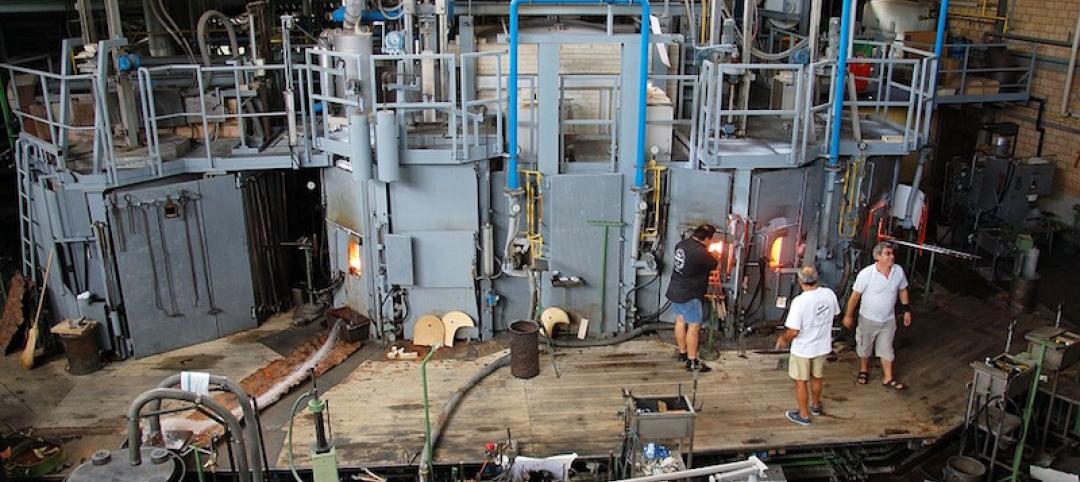Cities interested in bolstering their economies through innovation should look beyond the typical formalized processes.
Instead, a new paper from the Brookings Anne T. and Robert M. Bass Initiative on Innovation and Placemaking pushes economic development leaders to recognize that different types of firms innovate through distinct actors and both market and non-market channels. As a result, regions require industry-tailored innovation-support strategies.
In “How Firms Learn: Industry specific strategies for urban economies,” Brookings Senior Policy Analyst and Associate Fellow Scott Andes examines how manufacturing and software services firms develop new products, processes, and ideas. He illustrates three archetypal innovation models, which correspond to three industry types:
- Classic Industries, such as pharmaceuticals, work primarily with universities and other traditional innovation actors and use market channels, including contracts and licensing agreements, as sources of invention.
- Unconventional Industries, exemplified by small-and medium-sized manufacturers, primarily source innovation from clients and suppliers and pursue informal innovation channels, such as joint research agreements and supplier contracts.
- Mixed Industries predominantly rely on non-traditional actors but formal market channels to acquire innovation. Example industries include semiconductors, chemicals, and textiles.
“In order to build strong regional economies, urban economic development leaders should stop carbon copying other cities’ approaches and instead align local economic strategies with the particular ways their dominant industries innovate,” Andes said.
Specifically, public, private, and institutional stakeholders should develop strategies that:
- Recognize that all industries can be innovative, not just software and medical technology startups, and identify the particular innovation pathways utilized by local firms.
- Eliminate institution-wide technology transfer practices at research universities that focus on licensing and allow specific departments and centers to cater to different industries.
- Establish partnerships with non-research colleges and universities to support firms seeking short-term process innovation.
- Modify the traditional accelerator model to respond to the innovation needs of startups in nontraditional growth sectors.
- Link designers, engineers, and software developers in urban centers to manufacturing supply chains in the surrounding regions.
- Advance appropriate place-based strategies to increase the density of innovative firms and support organizations.
Such industry-contextualized approaches will allow for urban economic development resources to be used to their best advantage and firms and other innovation actors to maximize learning and economic power.
 Sources of innovation and channels by which acquired, by industry. Source: Author’s analysis of Arora, Cohen, and Walsh (2014) and Graham (2009). Click image to enlarge.
Sources of innovation and channels by which acquired, by industry. Source: Author’s analysis of Arora, Cohen, and Walsh (2014) and Graham (2009). Click image to enlarge.
Related Stories
Urban Planning | Sep 12, 2016
An Atlanta business group proposes a ‘floating’ park over a busy highway
The half-mile thoroughfare would connect to surrounding streets and companies.
Sustainability | Sep 7, 2016
New plans call for hundreds of thousands of British homes to be heated by factory machines
An expansion of ‘heat networks’ is viewed as a possible means for Britain to accomplish its goal of slashing carbon emissions by 2050.
High-rise Construction | Sep 7, 2016
Shenzhen Kingkey Group submits re-planning package for what could become China’s tallest tower
The high-rise, H700 Shenzhen Tower, is one of a group of towers being built in Shenzhen’s Caiwuwei financial and commercial area.
Building Team | Sep 6, 2016
Letting your resource take center stage: A guide to thoughtful site selection for interpretive centers
Thoughtful site selection is never about one factor, but rather a confluence of several components that ultimately present trade-offs for the owner.
Urban Planning | Jul 19, 2016
New game challenges players to create a utopian city block
By treating the neighborhood as a living entity, players of Block’hood take part in the creation, death, and rebirth of their own city blocks
Augmented Reality | Jul 15, 2016
Pokémon Go is helping people discover their cities
While catching them all may be the main goal, the wildly popular mobile game is also leading people to trek to unexplored corners of their cities
Urban Planning | Jul 13, 2016
'Shore to Core' competitions envision future waterfront cities
Design and research teams will use West Palm Beach, Fla., as their model.
Urban Planning | Jul 7, 2016
Y Combinator project would build new city using new technology, urban policies
Zoning, property rights, building codes all could be re-imagined.
Urban Planning | Jun 15, 2016
Swedish ‘Timber Town’ proposal from C.F. Møller provides a unique blend of nature and city
The development acts as a transition area between a traditional urban landscape and parklands.
Movers+Shapers | Jun 10, 2016
URBAN EVANGELIST: Bruce Katz sees America humming again, city by city
Katz, best known as Co-director of the Brookings Institution's Metropolitan Policy program, believes that cities are dynamic networks of like-minded public and private interests that have the potential to generate economic growth.

















